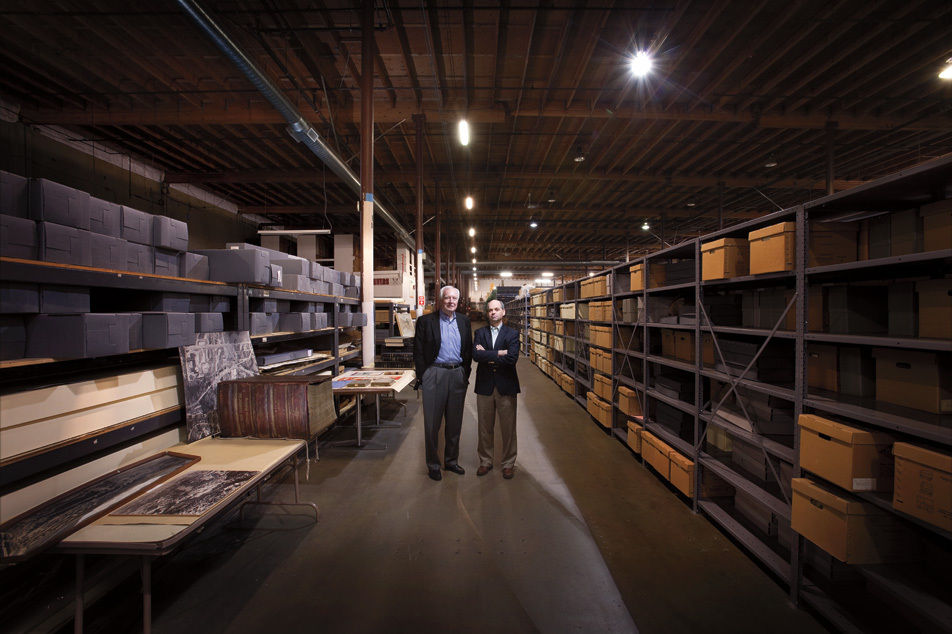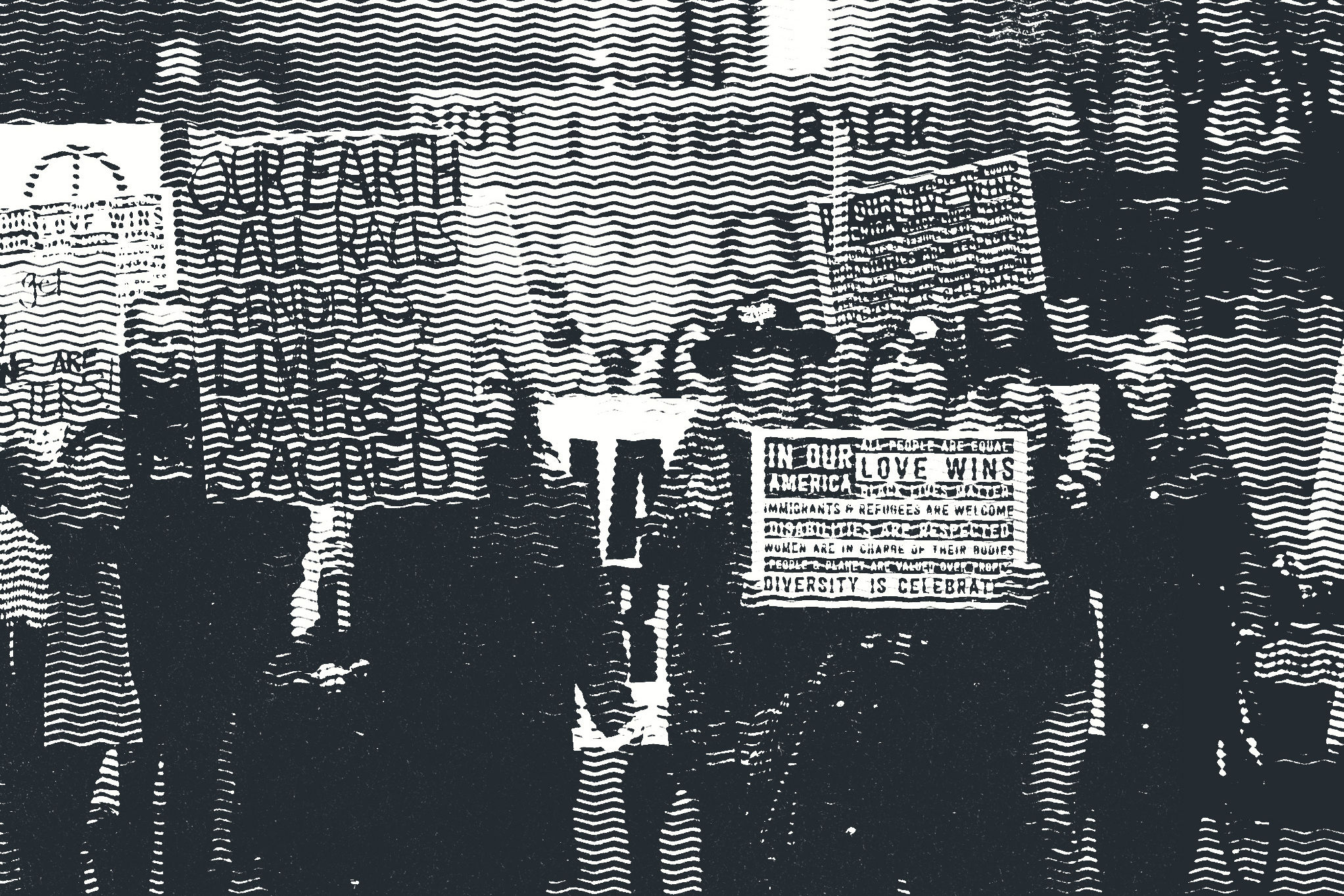Where Governors Go Shopping: The Oregon Historical Society Vault
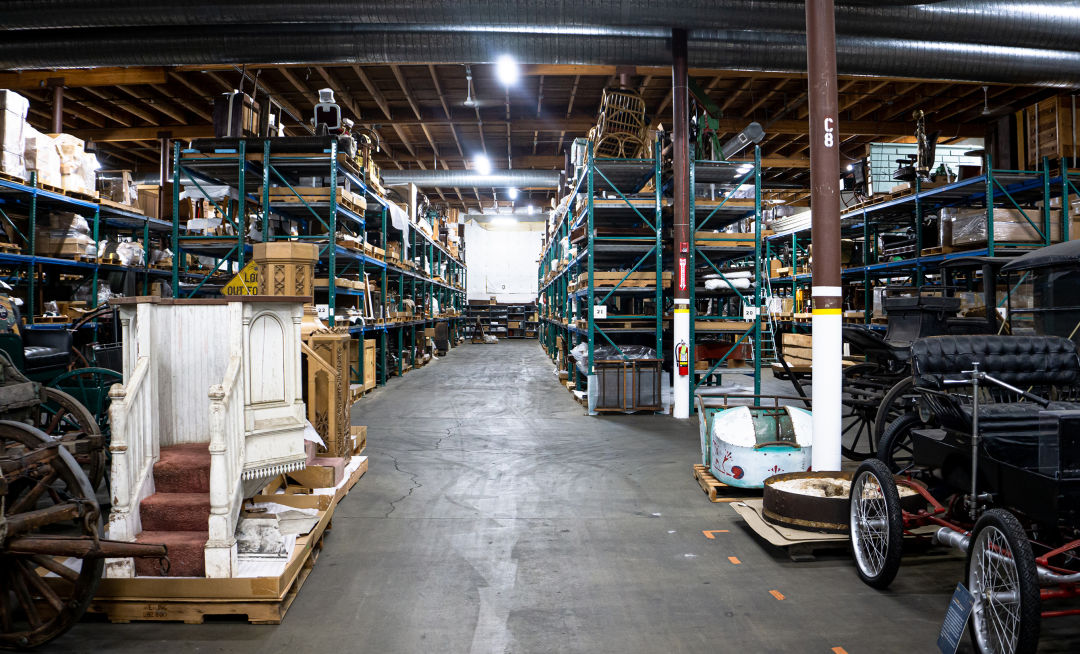
Oregon Historical Society's 100,000 square feet of historical odds and ends
Image: Evan Kierstead
One of the coolest perks of being an Oregon governor might be the clandestine “shopping trips” to this state’s most top-secret treasure trove. Yes, governors have their own “shopping mall.” It’s really more of a museum (even though it’s the size of a mall), and it’s overseen by those prestigious preservationists at the
Oregon Historical Society.
The OHS Vault is climate controlled (always a cool and comfortable 65 degrees) and encompasses 100,000 square feet. As OHS executive director Kerry Tymchuk said on a recent tour of the vast space, it’s “where artifacts go to die.” Home to priceless pieces of Oregon’s past, it’s a repository of cultural odds and ends that have no other place to go except an occasional OHS exhibit—unless, perhaps, the governor or someone in their household asks to have them sent to Mahonia Hall.
Built in 1924 for a wealthy hop farmer and his family, and designed by the founder and first dean of the University of Oregon’s School of Architecture and Allied Arts, the home was renamed after the state flower (Mahonia is the genus of the Oregon grape) when it was acquired by the state in 1988 to be the governor’s official residence. Then-OHS executive director Thomas Vaughan volunteered to help fill some of the large rooms in the mansion with furniture and art from the OHS collection, and to find new items to add. Tymchuk says the arrangement is “much like the relationship between the White House Historical Association and United States presidents.”
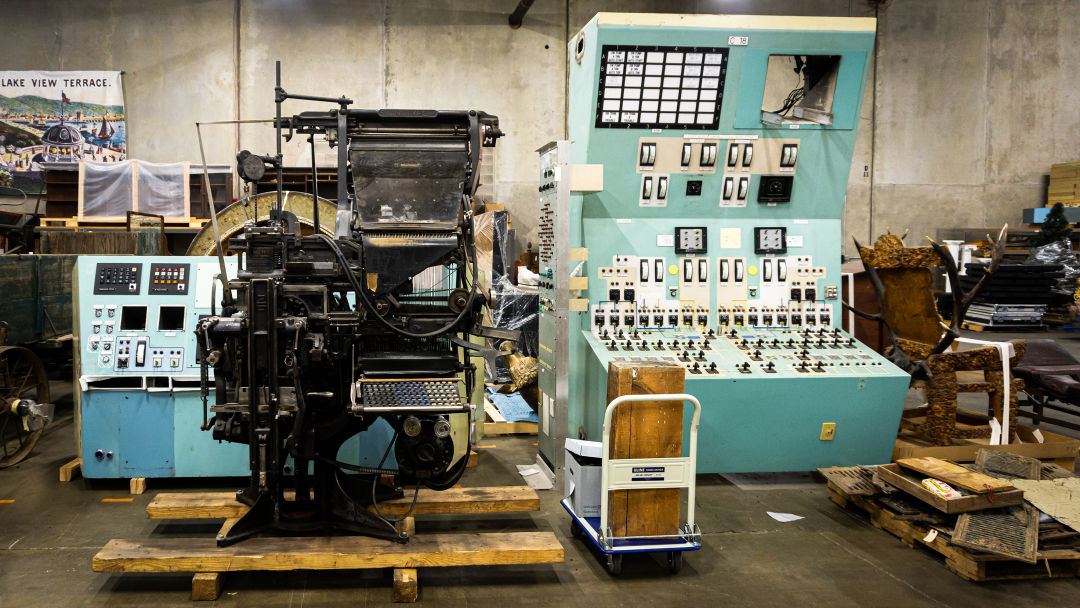
Items from the Trojan Nuclear Power Plant, which was decommissioned in 1992 and imploded in 2006
Image: Evan Kierstead
“Each resident of Mahonia has their own individual taste and interest, but as we see what excites them, we are able to steer them to similar items,” says Tymchuk, who sees the historical society more as a valued resource rather than as a stylist. "OHS is definitely not an interior decorator, but are honored to provide a touch of history.”
These artifacts aren’t affected by term limits—some items such as side tables have stayed at Mahonia through many administrations. No word if Gov. Tina Kotek and First Lady Aimee Wilson, who were still making their selections at press time, will ask for the cumbersome, albeit cinema-ready, diving suit of one Harold Maiken (an early user of underwater cameras), or the control panel of the Trojan Nuclear Plant, the Columbia County facility whose cooling towers were imploded in 2006. “The control panel is one item that visitors to the vault are always amazed to see,” says Tymchuk. “No governor has yet asked for it to be loaned to Mahonia!”
“Governor Brown was especially excited to be able to put to use in Mahonia the desk that Oregon Congresswoman Edith Green used during her years in Washington, DC,” says Tymchuk of one of the items chosen by previous Mahonia residents Kate Brown and First Gentleman Dan Little. “Congresswoman Green is regarded as one of the authors of what became Title IX, which opened up educational opportunities for countless women.”
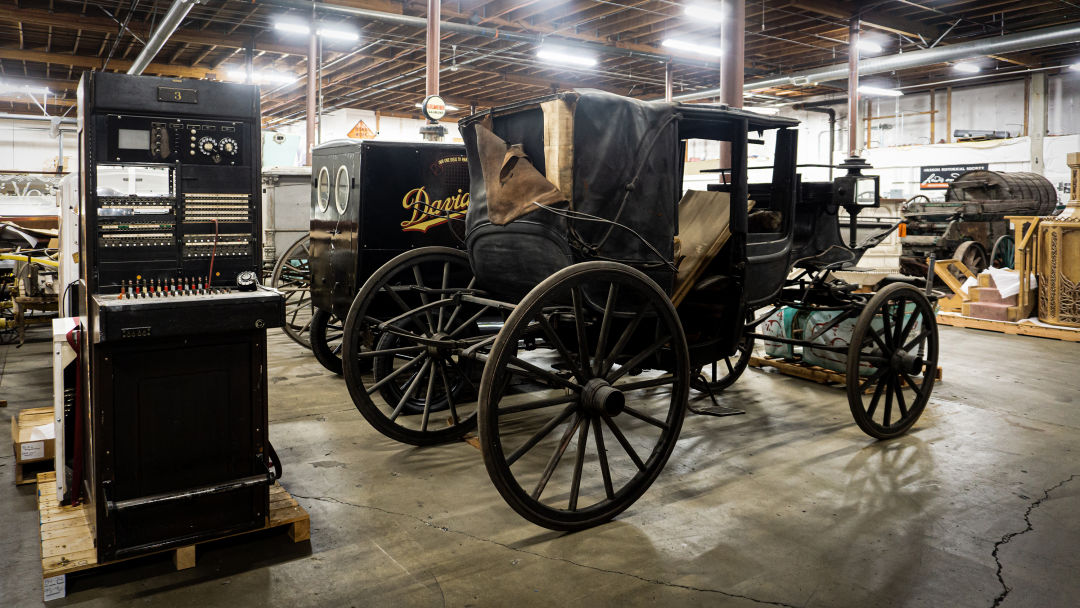
Image: Evan Kierstead
“Perhaps the most unique item on loan is the old-time, big-wheel bicycle,” says Tymchuk, noting a selection made by Little. “Dan and Governor Brown are enthusiastic cyclists.” No word if the First Couple ever took that old-timey bike out for a spin in Salem.
“Sisters artist Kathy Deggendorfer was also one of Governor Brown’s favorite artists, and when she heard that one of Kathy’s paintings had come into the OHS collection, she immediately requested it for Mahonia,” says Tymchuk. “It’s a very colorful Mount Bachelor landscape.”
The vault is also home to the red dress worn by Antoinette Hatfield on the day her husband, Mark Hatfield, was inaugurated as governor in 1959, and the blue dress worn by Barbara Roberts when she was inaugurated as the state’s first female governor in 1991. And there are much larger pieces, including the box office from the Fox Theater, a horse-drawn hearse, and the Santaland “monorail” car that once ran every Christmas season at the downtown Portland Meier & Frank building—items it’s hard to imagine fitting anywhere in a residence, unless Kotek or a future governor wants to throw one heck of a Christmas party.
